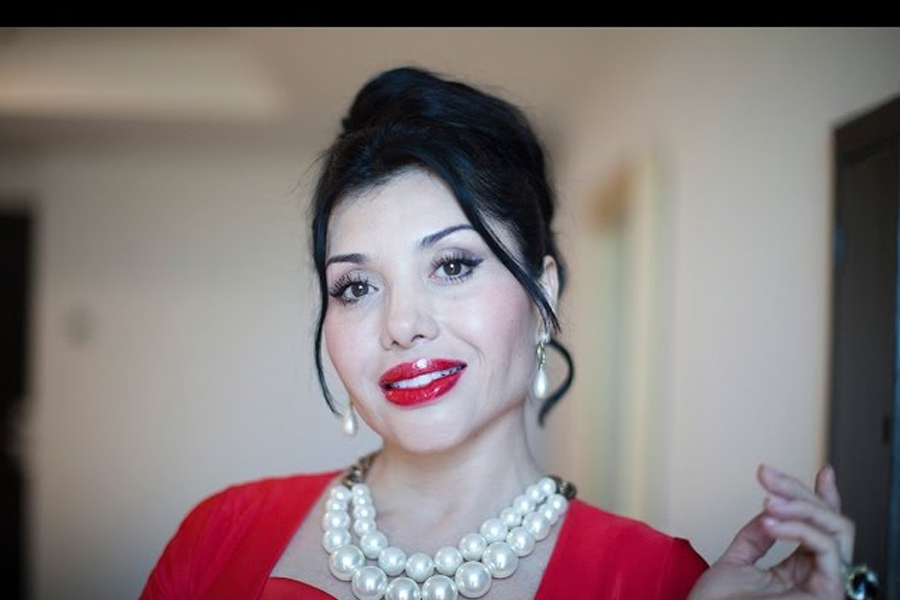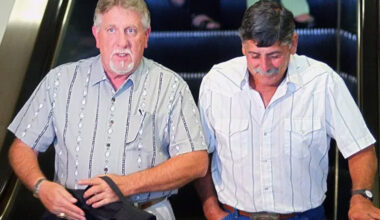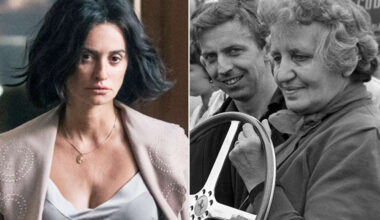Basic Information
| Field | Details |
|---|---|
| Full name | Diana Espinoza Aguilar |
| Also reported as | Altagracia Espinoza Aguilar; “La Diva” (reported nickname) |
| Reported birth | 17 July 1970, Matachí, Chihuahua, Mexico (commonly cited; independent civil-registry confirmation not publicly available) |
| Nationality | Mexican |
| Known for | Publicly identified as the reported common-law wife/partner of Rafael Caro Quintero; U.S. sanctions designation |
| Legal status (U.S.) | Designated under the Foreign Narcotics Kingpin Act (SDNT) on May 11, 2016 |
| 2008 arrest | Detained in Mexico on allegations tied to drug trafficking and money laundering; later incarcerated at Puente Grande |
| Relationship status | Publicly linked to Rafael Caro Quintero; multiple interviews and reports describe marriage/union circa 2016 and later separation steps |
| Children | Reported to have at least one son; outlets also report a child shared with Caro Quintero |
| Social media | Public accounts matching her name have appeared; authenticity not independently verified |
Early Life and Emergence into Public View
Very little about Diana Espinoza Aguilar’s early years exists in the reliable public record. Her story breaks into the spotlight in 2008, when she was arrested in Mexico on allegations connected to drug trafficking and money laundering. That single event became the hinge on which her private life swung open to public scrutiny. Before then, she was largely anonymous; afterward, she was woven into the broader narrative of Mexico’s long struggle with organized crime.
Public profiles often attribute her origins to Matachí, Chihuahua, and cite a 1970 birth date. Those details circulate widely, yet firm civil-registry documentation is not typically presented in mainstream coverage. In that sense, her biography lives at the intersection of rumor, reportage, and the hard edges of legal procedure—part shadow, part searchlight.
Arrest, Prison, and a Fateful Meeting
The 2008 arrest placed Diana on a track that would converge with one of the most notorious names in Mexican narco history. She was eventually incarcerated at Puente Grande, the high-security prison near Guadalajara. Multiple reports describe Puente Grande as the setting where she met Rafael Caro Quintero, then serving a long sentence. The encounter is often sketched as improbable—a chance crossing within prison walls that grew into a relationship intertwined with high-stakes legal cases and international headlines.
Accounts of her legal outcomes vary in detail depending on the outlet and year. What remains consistent is the broad arc: arrest, imprisonment, and release; then, a relationship that tethered her to public interest for years thereafter.
Partnership with Rafael Caro Quintero
Diana has been publicly identified as the reported common-law wife and later, in several accounts, as having a civil ceremony with Rafael Caro Quintero in 2016. She has given interviews in which she recounts how they met, the nature of their bond, and her life on the periphery of a figure whose name has been synonymous with power and controversy. Their relationship has been described as yielding at least one child, and her public statements often oscillate between personal defense, romantic narrative, and practical discussions of family life.
In interviews, she has cast herself not as a mover of empires but as a woman navigating a complicated world—one where love, loyalty, and legality constantly collide. It’s an intimate portrait colored by headline ink, where domestic scenes are framed by the scaffolding of judicial actions.
Sanctions and Financial Restrictions
On May 11, 2016, the U.S. government designated Diana Espinoza Aguilar under the Foreign Narcotics Kingpin Designation Act. The designation cited her as acting for or on behalf of Rafael Caro Quintero, including holding assets and conducting activities tied to him. In practice, such a designation freezes any U.S.-based assets and broadly prohibits U.S. persons and institutions from engaging in transactions with the designee.
Sanctions are more than a label; they are a force field. Banking relationships evaporate. Wire transfers stall. Property transactions become legal minefields. For any person named, the ripple effects can be sweeping—even if they reside outside the United States. The designation placed Diana squarely within the orbit of international financial restrictions, transforming reports of a private relationship into a web of compliance obligations, asset scrutiny, and reputational risk for anyone doing business nearby.
Family Members and Close Relations
Diana’s family narrative, as publicly described, sits at the junction of personal life and criminal-justice ecosystems. While some specifics remain guarded or contested, several relationships recur in reliable reporting.
- Rafael Caro Quintero — Reported common-law husband/partner
- A central figure in her public identity. Their relationship reportedly began while both were connected to Puente Grande, and many outlets describe a ceremony or civil union around 2016. Coverage in recent years also references her statements about separation or divorce steps.
- Former partner identified as “Ever” (commonly reported with surnames Villafañe/Villafane Martínez)
- Described in press accounts as a previous partner and connected to her 2008 arrest.
- Child(ren)
- Multiple outlets report at least one son and indicate she and Caro Quintero share a child. Given privacy concerns and varying accounts, specific names and birthdates are often treated cautiously in serious reporting.
- Extended family by marriage/association
- Coverage frequently situates her within the broader family network around Caro Quintero, though detailed rosters fluctuate across sources and are not consistently documented in official records released to the public.
Timeline of Key Public Events
| Date | Event |
|---|---|
| c. 1970 | Reported birth year in public profiles (location often cited as Matachí, Chihuahua) |
| 2008 | Arrest in Mexico on allegations tied to drug trafficking and money laundering |
| 2008–2010s | Incarceration at Puente Grande; multiple reports say she met Rafael Caro Quintero there |
| 2011–2013 | Coverage describes releases/changes in legal status, with varying detail by outlet |
| May 11, 2016 | U.S. sanctions designation under the Kingpin Act (SDNT) |
| 2016 | Multiple outlets report a civil/ceremonial union with Caro Quintero |
| 2022–present | Renewed media focus following major legal developments involving Caro Quintero; interviews and public statements by Diana about separation/divorce and family matters |
Media Presence and Public Statements
Diana has appeared in television interviews and news features, offering a rare first-person window into a life often narrated by others. In those appearances, she describes meeting Caro Quintero in prison, defends aspects of his character, and speaks about everyday concerns: custody, support, and the ordinary rhythms of raising a child under extraordinary circumstances.
Her media persona is careful yet candid, a balancing act on a high wire that spans romance, scandal, and survival. Public accounts suggest she maintains or maintained a social media presence under her name, but verification of authenticity can be difficult in a space rife with impersonation and rumor. Even so, the image that emerges is vivid: a woman orbiting a gravity well of notoriety, trying to define herself apart from it, even as the headlines circle back.
Legal and Financial Implications at a Glance
- The 2016 U.S. sanctions designation carries immediate consequences: asset freezes within U.S. jurisdiction and prohibitions on transactions by U.S. persons.
- Financial institutions—globally interconnected—may adopt risk-averse stances toward designees, constraining access to formal banking systems.
- Any property or business holdings linked to a designee can become subjects of compliance reviews and investigative attention, turning routine economic life into a maze of checks and barriers.
FAQ
Who is Diana Espinoza Aguilar?
She is a Mexican woman publicly identified as the reported common-law wife/partner of Rafael Caro Quintero and was designated by U.S. authorities under the Kingpin Act in 2016.
Why is she known internationally?
Because of her relationship to Caro Quintero and her 2016 U.S. sanctions designation, which has cross-border financial and legal implications.
Was she arrested?
Yes. She was arrested in Mexico in 2008 on allegations tied to drug trafficking and money laundering and later incarcerated at Puente Grande.
How did she meet Rafael Caro Quintero?
Multiple reports say they met while connected to Puente Grande prison, with the relationship developing during or after that period.
Are they married?
Media accounts describe a civil/ceremonial union around 2016 and later public statements by Diana about separation or divorce steps.
Does she have children?
Yes. Public reporting indicates at least one son, and that she and Caro Quintero share a child.
What does the U.S. sanctions designation mean for her?
It freezes U.S.-jurisdiction assets and bars U.S. persons from most transactions with her, complicating banking and property dealings.
Is she active on social media?
Accounts under her name exist, but authenticity can be uncertain; public figures in this sphere are frequently impersonated.



